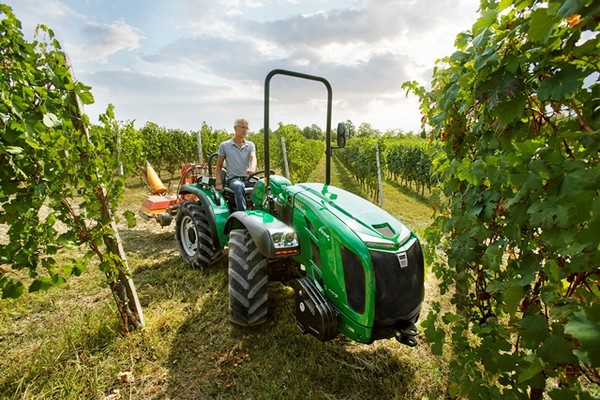
Emissions regulation, cannot be applied to overhang and half-track tractor engines
At a meeting held in 21st of June at Enovitis in Campo the technical difficulty of installing bulky exhaust devices for treating emissions on specialist vineyard and fruit orchard tractors became clear. Changing the built of these machines to make them capable of mounting them means compromising their functions and it would be unthinkable to modify planting distances by expanding the row widths. A request for an amendment of the regulation for the specific sector is being prepared
The European regulation on engine emissions has come back to threaten specialist tractors for vineyards and fruit orchards which do not have space for mounting bulky post-treatment devices for gas emissions. Strenuous negotiations on these narrow-track tractors led in 2016 to European Parliament and subsequently the European Council to recognize the need for a specific norm for these tractor and a timely adjustment for the regulation applied to these types but another technical problem has come up for track tractors and overhang engines.
These machines are adapted for operations in vineyards and fruit orchards due to their compact build and maneuverability as well as work on sloping land thanks to their narrow wheel base. Also in this case, the installation of SCR systems stipulated by the current emissions norm for lowering NOx would be impossible because of the small built of these tractors now in production. Engineering and design carries an impact for all the manufacturing industries and poses a problem for the function of these tractors for agricultural enterprises. These issues were discussed in Fabbrico, near Reggio Emilia, at a meeting given the name Emissions Regulation, a Risk for Vineyard Mechanization sponsored by the Federation of Agricultural Machinery Manufacturers Federation, FederUnacoma, and the Italian Wine Union UIV during field trials of machinery and equipment for the Viticulture Enovisit in Campo event. At the meeting, UVI Secretary General Paolo Castelletti, project coordinator Giovanni Rizzotti and the FederUnacoma Technical Service representative, Luca De Rinaldis, explained that adopting the new norms would force the manufacturing industries to make radical changes to the structure of the machines resulting in compromising their functions. Agricultural producers said the present vineyard specialist tractors are designed to meet the specific requirements of Italian planting formats with narrow rows often planted on hillsides. Moreover it would be unthinkable to replant existing vineyards to widen their rows. The agricultural machinery manufacturers and end-users agreed that modifying the tractors to confirm to the new EU standard would carry the risk of losing the market because the machines would not be suitable for the needs of vineyard enterprises. At the end of the meeting, FederUnacoma referred to dealing with this EU legislation, with the support of European manufacturers and farmers in CEMA and Copa-Cogeca, with a request for an amendment which would allow overhang and track tractor engines to take advantage of a specific schedule for complying with the emissions regulation.








